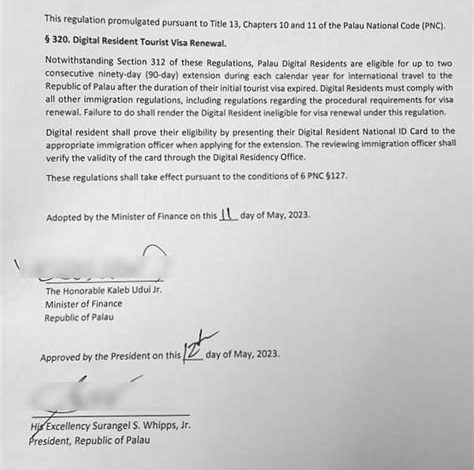Distance running presents a formidable challenge for athletes, requiring an intricate balance of endurance, stamina, and mental fortitude. To emerge as a veritable distance running powerhouse, athletes must meticulously craft a comprehensive training regimen that encompasses physical, mental, and nutritional aspects.

Igniting the Physical Engine
Embracing Long Runs: The foundation of distance running lies in consistently engaging in long runs. Gradually increasing the distance and duration of these runs over time enables the body to adapt physiologically, building a robust cardiovascular system and enhancing muscle endurance.
Tempo Runs: Tempo runs involve sustaining a pace slightly slower than one’s target race pace. These demanding sessions tax the cardiovascular system, conditioning the body to efficiently process oxygen and sustain high intensity over extended periods.
Interval Training: Interval training alternates between periods of high-intensity effort and recovery. This method not only improves lactate threshold (the point at which muscles begin to tire) but also enhances aerobic capacity and running economy.
Hill Workouts: Incorporating hills into training strengthens leg muscles, improves stride efficiency, and stimulates cardiovascular adaptation. Regularly challenging oneself on inclines builds a solid foundation for conquering demanding race terrain.
Fortifying the Mental Muscle
Visualization: Visualizing successful runs before, during, and after training can cultivate a positive mindset, boost confidence, and reduce anxiety. Athletes can mentally rehearse racing scenarios, envisioning themselves navigating challenges and achieving their goals.
Goal Setting: Establishing clear, attainable goals provides motivation and direction. Breaking down long-term objectives into smaller milestones fosters a sense of accomplishment and keeps athletes focused on the journey.
Self-Talk: Positive self-talk plays a crucial role in maintaining motivation and composure during demanding runs. Athletes should engage in encouraging and empowering self-talk, focusing on their strengths and capabilities.
Managing Fatigue: Distance running inevitably involves periods of fatigue. Developing coping mechanisms to manage physical and mental exhaustion is essential. Techniques such as relaxation exercises, deep breathing, and mindfulness can mitigate fatigue and enhance recovery.
Fueling the Body for Peak Performance
Hydration: Maintaining optimal hydration is paramount for distance runners. Dehydration can impair performance and increase the risk of injuries. Athletes should consume fluids regularly, especially before, during, and after runs.
Carbohydrate Intake: Carbohydrates provide the primary fuel for distance running. Consuming an abundance of complex carbohydrates, such as whole grains, fruits, and vegetables, replenishes muscle glycogen stores and sustains energy levels.
Protein for Recovery: Protein is essential for muscle repair and growth. Including adequate protein in the diet supports recovery from intense training sessions and promotes muscle development.
Iron Intake: Iron is a vital mineral that aids in oxygen transport throughout the body. Distance runners should ensure they consume iron-rich foods, such as red meat, spinach, and fortified cereals, to prevent anemia.
Supplementation: Certain supplements may enhance performance for distance runners. For example, studies show that caffeine can improve endurance and reduce perceived exertion. Athletes should consult with healthcare professionals before incorporating supplements into their routines.
Effective Strategies for Improvement
Cross-Training: Engage in complementary activities such as cycling, swimming, or strength training to improve overall fitness, reduce injury risk, and maintain motivation.
Rest and Recovery: Adequate rest and recovery are crucial for adaptation and progress. Incorporate rest days into the training plan and prioritize quality sleep to facilitate muscle repair and restoration.
Race Simulation: Conduct race simulations during training to familiarize oneself with the demands of the specific race distance and terrain. These simulations provide opportunities to refine pacing strategies and mental preparation.
Training with a Partner: Find a training partner with similar goals to provide accountability, support, and motivation. Training together can enhance consistency and make the process more enjoyable.
Tips and Tricks for Success
Listen to Your Body: Pay attention to your body’s signals and adjust training intensity and duration accordingly. Pushing too hard too soon can lead to injuries or burnout.
Seek Professional Advice: Consulting with a qualified coach, physical therapist, or registered dietitian can provide personalized guidance, injury prevention strategies, and nutritional recommendations tailored to individual needs.
Gradual Progression: Avoid increasing training load or intensity too rapidly. Gradual progression allows the body to adapt and reduces the risk of injuries.
Stay Motivated: Set realistic goals, find activities that you enjoy, and surround yourself with a supportive network of friends and family to maintain motivation throughout the training journey.
Common Mistakes to Avoid
Overtraining: Excessive training volume or intensity can lead to fatigue, injuries, and burnout. Listen to your body and rest when necessary.
Inadequate Hydration: Dehydration can significantly impair performance and increase the risk of injuries. Make hydration a priority during training and racing.
Poor Nutrition: Neglecting proper nutrition can compromise energy levels, recovery, and overall health. Fuel your body with a balanced diet that meets your training demands.
Ignoring Rest and Recovery: Insufficient rest and recovery can hinder progress and increase the likelihood of injuries. Make rest and recovery an integral part of your training plan.
Additional Tables for Enhanced Insight
Table 1: Training Log
| Day | Distance (miles) | Pace (min/mile) | Notes |
|---|---|---|---|
| Monday | 6 | 9:30 | Tempo run, 3-minute intervals |
| Tuesday | 4 | 10:00 | Recovery run |
| Wednesday | REST | – | – |
| Thursday | 8 | 9:00 | Long run |
| Friday | 3 | 10:30 | Easy run |
| Saturday | 5 | 8:50 | Hill workout |
| Sunday | REST | – | – |
Table 2: Sample Meal Plan for Distance Runners
| Meal | Carbohydrates | Protein | Fat |
|---|---|---|---|
| Breakfast | Oatmeal with fruit and nuts | 2 eggs | 1/2 avocado |
| Lunch | Sandwich on whole-wheat bread with lean protein, vegetables, and cheese | Greek yogurt | Mixed greens salad with olive oil and vinegar |
| Dinner | Salmon with roasted vegetables | Brown rice | Steamed asparagus |
| Snacks | Apple with peanut butter | Trail mix | Banana with almond milk |
Table 3: Running Performance Metrics
| Metric | Description | Target Range for Distance Runners |
|---|---|---|
| Lactate Threshold | The point at which muscles begin to fatigue | 80-90% of maximal heart rate |
| VO2 Max | The maximum volume of oxygen consumed per minute per kilogram of body weight | 60-70 mL/kg/min |
| Running Economy | The amount of oxygen consumed at a given running pace | 180-220 mL/kg/min |
Table 4: Performance-Enhancing Supplements for Distance Runners
| Supplement | Benefits | Dosage |
|---|---|---|
| Caffeine | Improves endurance and reduces perceived exertion | 3-6 mg/kg of body weight |
| Creatine | Increases muscle power and speeds recovery | 5-10 g per day |
| Beta-Alanine | Buffers lactic acid and delays fatigue | 2-5 g per day |
| Sodium Bicarbonate | Neutralizes acid buildup in muscles | 0.2-0.4 g/kg of body weight before exercise |
Conclusion
Becoming a distance running powerhouse requires a multi-faceted approach encompassing physical training, mental preparation, and nutritional optimization. By implementing effective strategies, embracing proven techniques, and avoiding common pitfalls, athletes can unlock their potential and transform themselves into formidable competitors on the running track. With unwavering determination and consistent effort, they can harness the power of distance running to achieve their athletic aspirations and experience the profound satisfaction that comes with pushing their limits.











